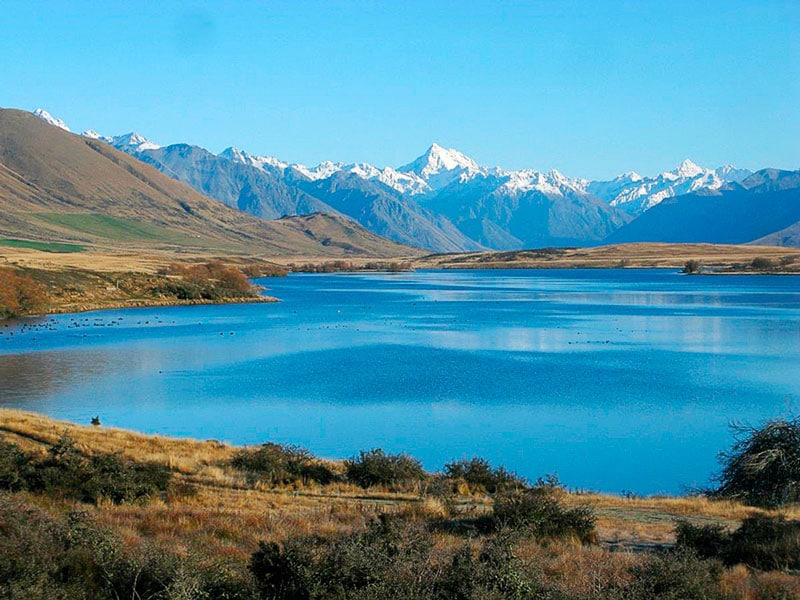Toxic algae bloom closes once-pristine lake
3 min read
Lake Clearwater in Ashburton Basin lakes. Photo: Supplied
Lake Clearwater in Ashburton Basin lakes is closed as of 21 December 2020 until further notice after potentially toxic blue-green algae (planktonic cyanobacteria) was found in the waters.
Canterbury DHB’s Community and Public Health unit issued a health warning saying people should avoid the lake, and animals, particularly dogs, should not be allowed near the water until the health warning has been lifted.
Dr Ramon Pink, Canterbury medical officer of health, said the algal bloom can produce toxins harmful to humans and animals.
“People should avoid contact with the water until further notice.
“Exposure may cause skin rashes, nausea, stomach cramps, tingling and numbness around the mouth and fingertips. If you experience any of these symptoms, visit your doctor immediately and please let your doctor know if you have had contact with the lake water.”
Cyanobacteria are caused by a combination of nutrients in the water (such as nitrogen and phosphorous) and favourable weather conditions, e.g. increased temperature, calm days.
Environment Canterbury monitors the lake weekly while the warning is in place and the public will be advised of any changes in water quality that are of public health significance.
Forest & Bird said land use intensification of sheep and beef farming over the past 10 years is taking a toll on biodiversity and recreation for Lake Clearwater and neighbouring lakes and wetlands.
The area is normally known for wildlife, such as Australasian crested grebes and secretive wetland birds such as bitterns, as well as recreational fishing, boating, and windsurfing.
Debs Martin, Forest & Bird regional conservation manager, was at Lake Clearwater visiting her family bach of 50 years and says she was horrified by the brown cloudy lake water.
“Right now, it looks like pea brown soup and it’s not safe to use. It’s just awful. You should be able to see down into the depths of the lake, that’s how the lake got its name and why fishers and holidaymakers love it so much,” she said.
“This lake is incredibly important for wildlife, like diving birds that need to be able to see prey in the water to feed. We’ve wrecked their only home. The councils responsible need to do better.”
The latest report from Environment Canterbury shows Lake Clearwater is polluted with nutrients from farmland runoff, and it has not met the Canterbury Land and Water Regional Plan (LWRP) standards since 2005, Forest & Bird said.
The organisation added that other lakes in the area are in even worse shape, such as the small and shallow Lake Denny, which has hyper and super-trophic states on a regular basis and has never met LWRP standards. Lake Emma, which is popular for wildlife and fishing and surrounded by intact wetland areas, is also enriched with nutrients and has never met LWRP standards.
Māori Lakes, the poster child for the Hakatere Conservation Park and the O Tu Wharekai restoration project, are also showing significant declines in water quality. The catchment of these small but vital wetlands has seen almost 100% intensification over a short period of time.
“Neither district nor regional councils are doing enough to protect fresh water. There are standards in place and monitoring is occurring, but after 15 years of failing to meet their own standards, the Regional Council has not taken the actions necessary to actually stop intensification and the extensive use of fertilisers.
They need to take action now. We could lose these incredible natural lakes and essential habitats. I worry it may already be too late,” said Martin.



